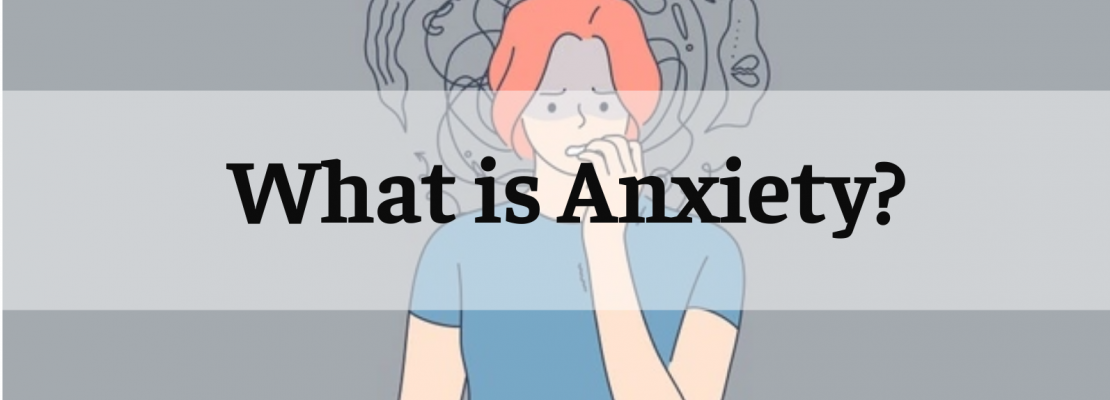
Feeling anxious is a common sensation which can occur in stressful or uncomfortable situations. Evolutionally, being afraid of certain animals, situations and objects was ensuring survival, which explains the phenomena of “preparedness” showing a higher tendency to be afraid of potentially dangerous animals or situations, such as snakes or heights. Being afraid of certain things can also be learned through classical and operant conditioning, in which a fear-inducing stimulus is paired with a former neutral stimulus or context, and results in a person reacting with fear to a harmless situation, after the conditioning process.
Anxiety disorders mostly begin during childhood and adolescence and can be caused by anxiety in family history and therefore the upbringing and genetic factors. Apart from conditioning and preparedness, personality traits such as neuroticism can also lead to a higher tendency to suffer from an anxiety disorder.
With a 12-month prevalence of about 14% anxiety disorders can be considered as the most common mental health conditions in Europe. The DSM-5 classifies different types of anxiety disorders such as:
- Panic Disorder With/Without Agoraphobia
(Having panic attacks repeatedly and (not) avoiding places or situations in which a panic attack could occur) - Agoraphobia Without History of Panic Disorder
- Specific Phobia (anxiety provoked by exposure to a specific feared object)
- Social Phobia/Social Anxiety Disorder
(anxiety provoked by certain types of social or performance situations) - Obsessive-Compulsive Disorder
(obsessions, which cause anxiety/stress, and compulsions, which serve to neutralize anxiety) - Posttraumatic Stress Disorder
- Acute Stress Disorder
- Generalized Anxiety Disorder (at least six months of persistent and excessive anxiety)
- Not Otherwise Specified Anxiety Disorder
Anxiety disorders are often comorbid to depression and substance related disorders. Also, a former meta-analysis revealed a sequential comorbidity to previous anxiety disorders: children with separation anxiety do have a higher risk of developing a panic disorder, than children without separation anxiety.
But how is a healthy amount of feeling anxious to be delimited from an anxiety disorder that requires the need of support and treatment? Generally, anxiety can be considered as a disorder if it is there all the time or interferes with someone’s life intensely, which is the case with the Generalized Anxiety Disorder (GAD). GAD contains mental features such as physical sensations. Mental features are expressed by a constant state of worrying, struggle to concentrate, forgetfulness, feeling stressed or irritable and sleep difficulties. Physical sensations going hand in hand with GAD are arousal such as rapid breathing, increased heartbeats, sweating, and shaking, and pains, dizziness, fainting, poor appetite and indigestion.
The DSM-5 states the following diagnostic criteria for a Generalized Anxiety Disorder (GAD):
- Excessive anxiety and worry, occurring more days than not for at least six months.
- Difficulty to control the worry.
- The anxiety is associated with at least three of the following symptoms:
- Restlessness
- Being easily fatigue
- Difficulty concentrating
- Irritability
- Muscle tension
- Sleep disturbance
- The focus of the anxiety and worry is not confined to another disorder in the spectrum of Anxiety.
- The client experiences clinically significant distress or impairment
- The disturbance is not due to the physiological effect of a substance or a general medical condition.
There are many approaches to treat anxiety disorders, whereas cognitive behavioral therapy shows the greatest success and documented efficacy. In CBT specific goals are established between the client and the therapist. Evidence-based techniques are used to provoke the client’s physical sensations such as arousal, dysfunctional thinking and beliefs about the consequences of this arousal and coping mechanisms. An important step is the psychoeducation in which the patient learns about the way their body reacts to specific stimuli and how an anxiety disorder can affect the interpretation of these bodily reactions.
Another step can be daily or weekly homework for the patients to learn more adaptive ways to reduce alarm reactions and dysfunctional beliefs through coping strategies. This is often carried out through exposition exercises, where the client is exposed to anxiety inducing situation or thought for a specific amount of time in order to habituate to the anxiety response. Through exposition, the client realizes that their anxious feeling can pass without avoidance or escape as a coping mechanism, which used to contribute to the maintenance of the disorder. It is possible to combine CBT with medication such as SSRI’s.
Mindfulness-based cognitive therapy, which includes meditation, lets the client separate themselves from their anxiety and identify themselves with their sense of self, instead of their disorder. In order to do that, the client learns that anxious thoughts are to be accepted and to be observed, not to be fought. Self-monitoring with additional symptom-reduction techniques such as breathing- and relaxation techniques can increase the client’s motivation to confront their disorder in that way.
Generally, decisions regarding the treatment should be made accordingly, considering the severity of the disorder and the preferences of the client. Also, side effects, availability, latency and durability of the treatment effect need to be taken into consideration.
Intern Psychologist
Sara Huggett
References:
American Psychiatric Association. (2013). Diagnostic and statistical manual of mental disorders (5th ed.). https://doi.org/10.1176/appi.books.9780890425596
Bystritsky, A., Khalsa, S. S., Cameron, M. E., & Schiffman, J. (2013). Current diagnosis and treatment of anxiety disorders. P & T: a peer-reviewed journal for formulary management, 38(1), 30–57.
Rana, S. (2017, May 11th). Anxiety Explained. Psychiatry-UK. https://psychiatry-uk.com/anxiety-explained/
Ströhle, A., Gensichen, J., and Domschke, K. (2018). The diagnosis and treatment of anxiety disorders. Dtsch. Arztebl. Int. 115, 611–620. doi: 10.3238/arztebl.2018.0611
